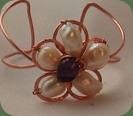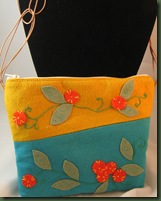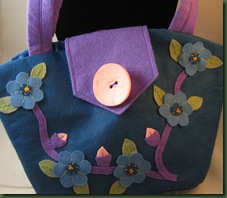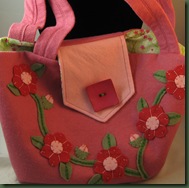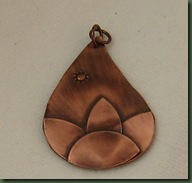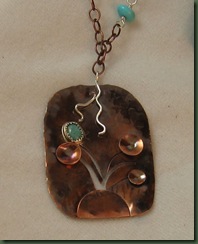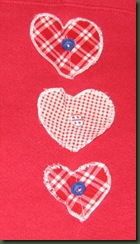Do you turn the television off these days when you hear a segment about the “royal” couple? Are you tired of seeing hats with big brims and feathers that blow in the wind? Will this all end after the young British couple is finally wed? At the very least, surely the stories will slow down. . . but I may be hoping for too much.
Even though I’ve avoided the opportunity to wonder about the bride’s dressmaker or whether she will wear flowers in her hair, I have conjured greatest if I could just design a few of the jewelry pieces for the wedding. Hmm . . . I wonder how the queen would look in a funky metal piece like the one below?
Alas, I guess we’ll never know. (I think a little metal something would be quite charming on one of those hats!)
I did think of that royal couple this week when I opened the mail and found a royalty check from one of my books on creativity. I’m still amazed that people buy something I wrote in 1994 that was published in 1996. It just goes to show that I’d better watch what I say that is published since those words hang on and on.
After receiving that check, I wondered how to perpetuate a jewelry design such that it paid off for as many years as that book. The closest I could think of would be the payoff from tutorials. As you probably know, I have two bracelet cuff tutorials in my etsy shop and, like the books, they bring me some cash from time to time.
I considered whether a design that lives several seasons or even years is a type of royalty. A boutique customer requested a freeform peyote cuff last week. This is something I haven’t made in years, but it still has life. 
Now, if I can just remember how I gave it that life!
I can’t say this example is a good analogy to the book royalties since I do have to do the work again. The books and tutorials don’t require anything further.
There is, of course, that option of writing a book about designing jewelry. Yet, I remember how long it takes to put a book together, the pain of dealing with a grouchy editor, the long wait before it goes to press and the tiny percentage an author receives from each book sale. It seems to me that the next time I think I want “royalty”, I’ll just put a floppy hat on my head and go out for a stroll.


